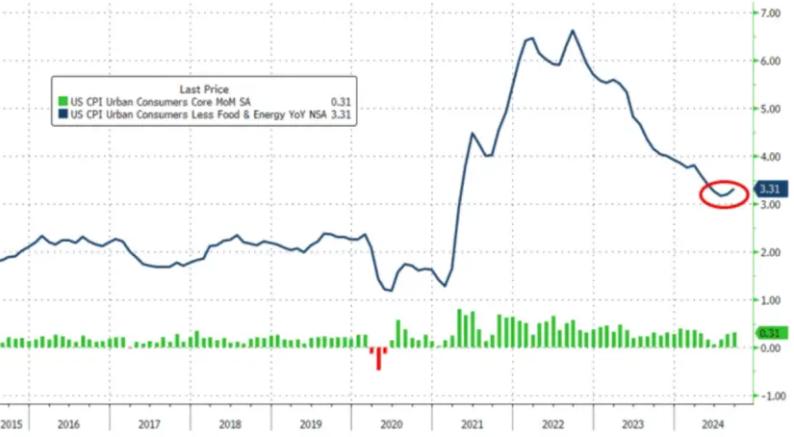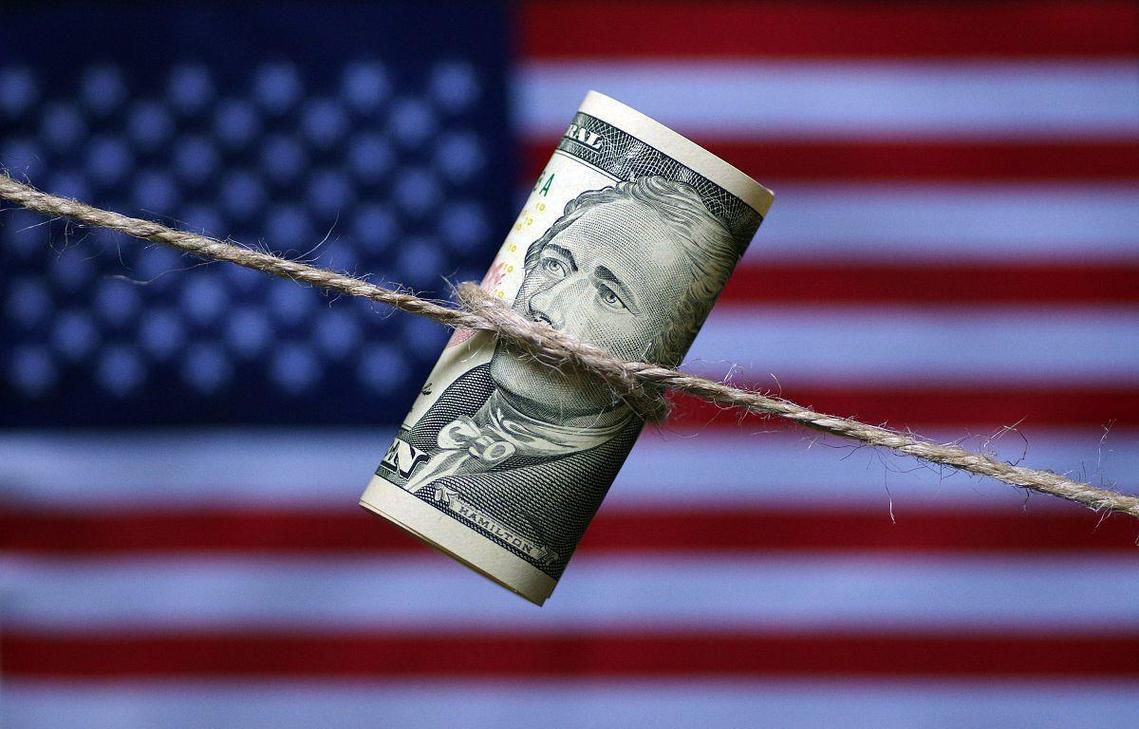
Last night, the US Bureau of Labor Statistics released data showing that the US CPI rose 2.4% year-on-year in September, higher than the expected 2.3%. Slightly down from the previous reading of 2.5%, the US core CPI rose 3.3% in September year-on-year, also higher than expected and the previous reading of 3.2%. After the data, traders increased bets that the Federal Reserve would cut interest rates by 25 basis points in November. According to CME's "Fed Watch," before the CPI data, the probability of the Fed cutting rates by 25 basis points by November was 76.1%, and the probability of no rate cut was 23.9%. Fed Chairman Jerome Powell said in a speech a few days ago that there is growing confidence that inflation will return to the 2 percent target, and more employment and inflation reports will be considered before the Fed meets in November. This means that the pace of the Fed's rate cuts will depend on future economic data and market conditions, so the prospect of rate cuts is uncertain.
The change of the Fed's interest rate cut expectation will have a complex and multi-faceted impact. First, the impact on the global financial market is that the Fed's interest rate cut is usually positive for the stock market, because the lower interest rate reduces the financing cost of enterprises and improves the profit expectations of enterprises. However, the uncertainty over the prospect of interest rate cuts may lead to increased stock market volatility, which investors need to handle with caution. A rate cut causes bond yields to fall because investors have lower expectations of future interest rates. However, in the uncertain prospect of interest rate cuts, the bond market may face greater volatility and risks. The uncertainty over the prospect of rate cuts has had a particularly significant impact on currency markets. On the one hand, a rate cut could cause the dollar to weaken, as lower interest rates make dollar assets less attractive. On the other hand, if rate cut expectations are disappointed, the dollar could rebound quickly.
The second is the impact on the economy, the Fed rate cut is often seen as a means to stimulate economic growth, by lowering borrowing costs, encouraging businesses and individuals to invest and consume more. However, uncertainty over the prospect of a rate cut could lead businesses and individuals to hold money on the sidelines, affecting the dynamics of economic growth. Uncertainty about the prospect of a rate cut could lead to instability in global capital flows. On the one hand, lower interest rates could attract capital to emerging markets and boost their economic growth. On the other hand, if the expected rate cut is disappointed, capital may quickly outflow, causing market turmoil.
Third, the impact on exchange rates and international trade, uncertainty about the Fed's outlook could lead to instability in global capital flows. On the one hand, lower interest rates could attract capital to emerging markets and boost their economic growth. On the other hand, if the expected rate cut is disappointed, capital may quickly outflow, causing market turmoil. Lower interest rates help reduce borrowing costs for businesses and individuals, thereby boosting trade finance. However, trade finance could suffer somewhat amid uncertainty over the outlook for rate cuts, as companies and banks may be more cautious in assessing lending risk. Changes in exchange rates may affect the status and competitiveness of different countries and regions in international trade. A weaker dollar could make U.S. exports more competitive, but it could also lead to lower exports and lower earnings for other countries. This shift in trade patterns could have profound implications for the global economy.
Fourth, the impact on consumers, the uncertainty of the prospect of interest rate cuts makes investors face greater challenges when making investment decisions. Investors need to consider a variety of factors, including economic growth, inflation levels, exchange rate fluctuations, etc., in order to develop a reasonable investment strategy. With the prospect of interest rate cuts uncertain, investors need to pay more attention to risk management. Through diversification, risk hedging and other strategies, reduce the volatility of the investment portfolio to ensure the safety and stable appreciation of assets.
To sum up, the impact of the sudden variable of the Fed's interest rate cut prospect is multi-faceted, and the future pace of the Fed's interest rate cut will depend on the evolution and interaction of these factors. Therefore, investors and policymakers need to pay close attention to the Fed's monetary policy dynamics, as well as changes in the global economic and political landscape, in order to formulate sound investment strategies and policy responses.

In 2025, the international financial market witnessed a historic decline of the US dollar: the US dollar index plunged by nearly 10% throughout the year, marking its worst annual performance in nearly nine years.
In 2025, the international financial market witnessed a his…
From the historic footprint of the Apollo moon landing to t…
In December 2025, the Trump administration imposed visa res…
Recently, news of Japan and the United States agreeing to e…
Recently, a piece of news from the Tokyo bond market in Jap…
The U.S. economy in December 2025 resembles a meticulously …